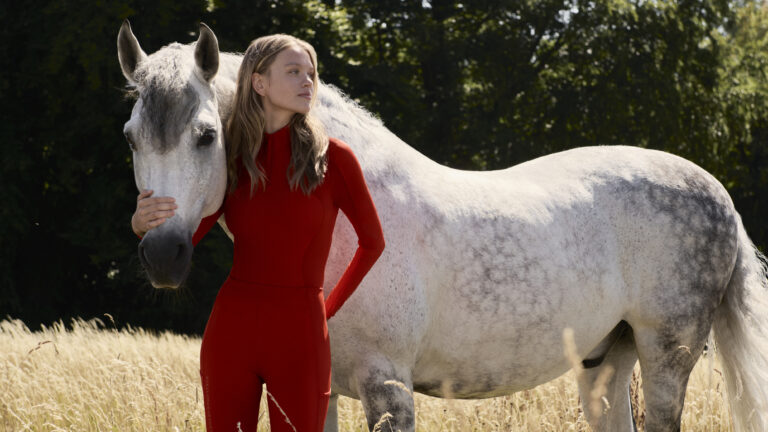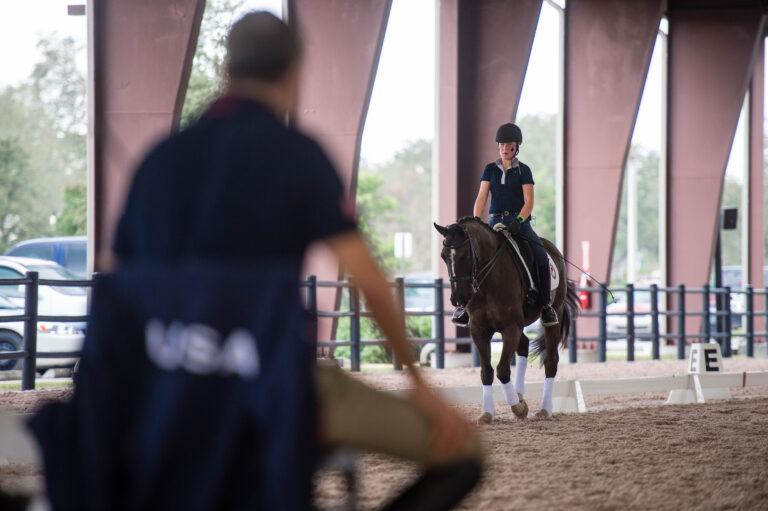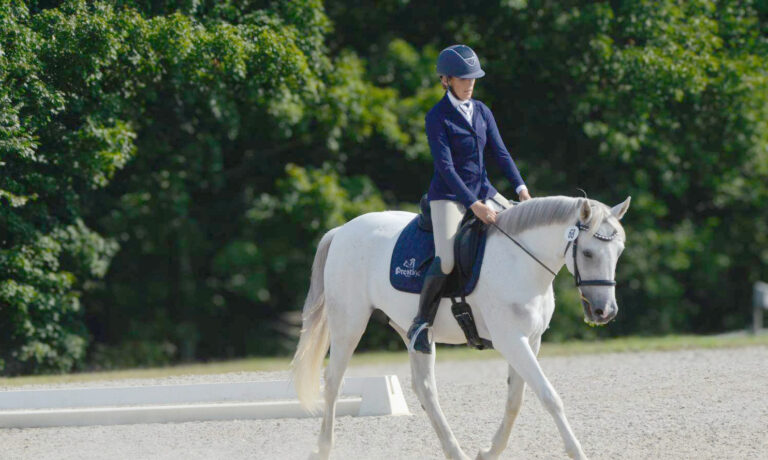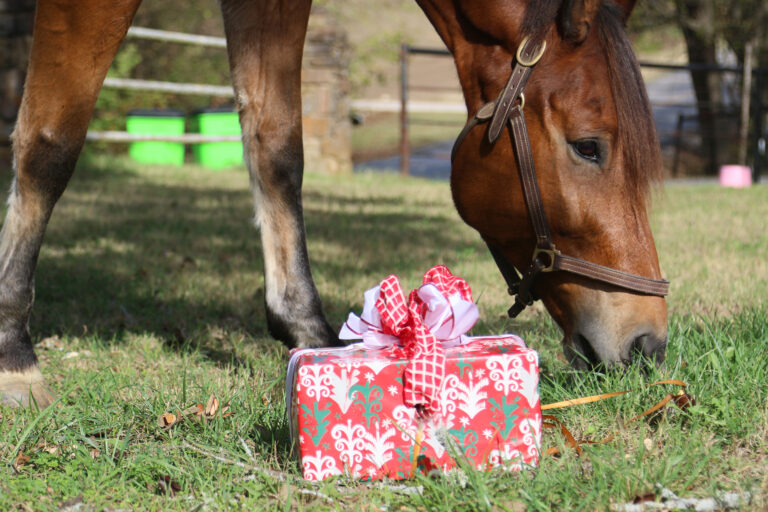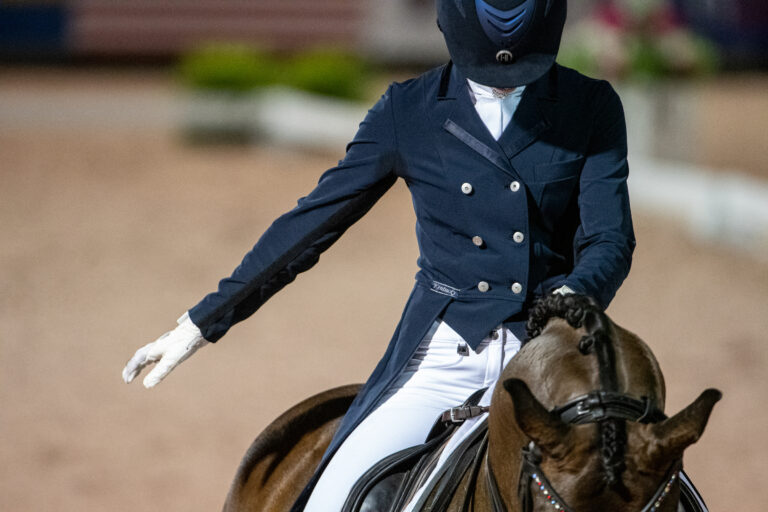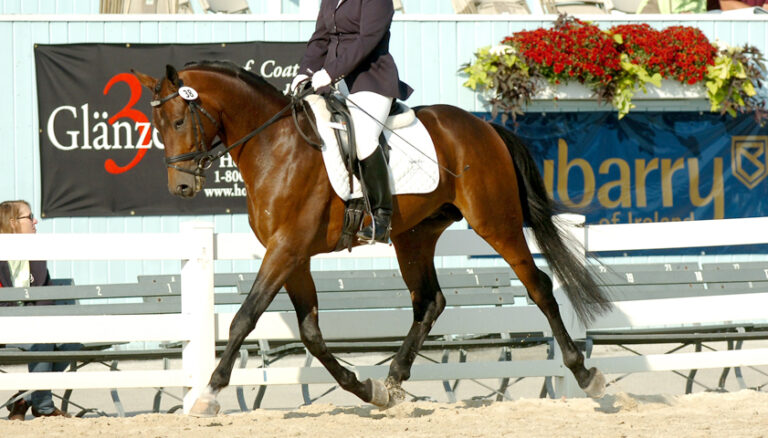There they are, your friends and their horses on a crisp clear day at the local dressage show, immortalized in pictures–the pictures that you took! But let’s go back to the beginning, where all of this picture-taking begins. Much like learning the basics of good riding skills, you, too, can take your average point-and-shoot camera and come home with some nice clinic or horse show moments.

Just like any other piece of equipment that we use on a regular basis, the camera you choose should fit well into your lifestyle and hands. I wanted a small camera that I could easily take on day trips. I chose the Canon Power Shot G5, because I liked the way it felt in my hands. I also loved the flip-out screen in the back, which allows me to photograph myself with my friends right on the spot.
The Basics
There’s no hard and fast rule for choosing a camera. There are hundreds of brands on the market today, all claiming to have the best functions or the best gadgets to ensure top quality pictures. But the truth of the matter is, much like horses, each one has a limitation, which is why all cameras do not produce the same results and why all horses do not get to Grand Prix. Keeping that in mind, here are some of the features you might like to compare when shopping for a camera:
Megapixels (MP). Pixels are the information that makes up a digital picture. The more pixels the clearer and sharper your photo will be. A camera with at least four to six megapixels will give you very nice prints up to 8-by-10 inches if you fill the frame with the initial picture. The more you crop in or enlarge a picture, the poorer the quality will be unless you start with a big enough picture or enough pixels. So, regardless of the number of megapixels your camera has, the key is filling the frame with the image you are shooting so you don’t have to enlarge and crop it.
Memory cards. Pixels make up the information that the camera stores on a memory card at the time you press the shutter and allow light in. They come in different sizes and brands, as well. Memory cards look a lot like muffin pans inside, and they fill with light when a picture is taken. Too much light, and the pans overflow, resulting in an overexposed or too-bright picture. With too little light in the pans, the picture will be dark. Photo software will help this slightly, but digital storage is very unforgiving. When shopping for cards, think about how much you want to shoot and store on them, what brand it is and what your camera requires. (All cards do not fit in all cameras.)
Optical zoom ability. I like to walk up to a subject instead of using a zoom function, but there are times zoom can come in handy. The zoom feature uses the lens of the camera to bring the subject closer. So, when you see 4x, 6x or 12x, this means the camera has the ability to bring your subject four, six or 12 times closer in the picture without your needing to walk toward it. The downside is that it deteriorates the quality of your picture for a variety of reasons, such as distortion at the extreme end of the range and poorer autofocus performance.
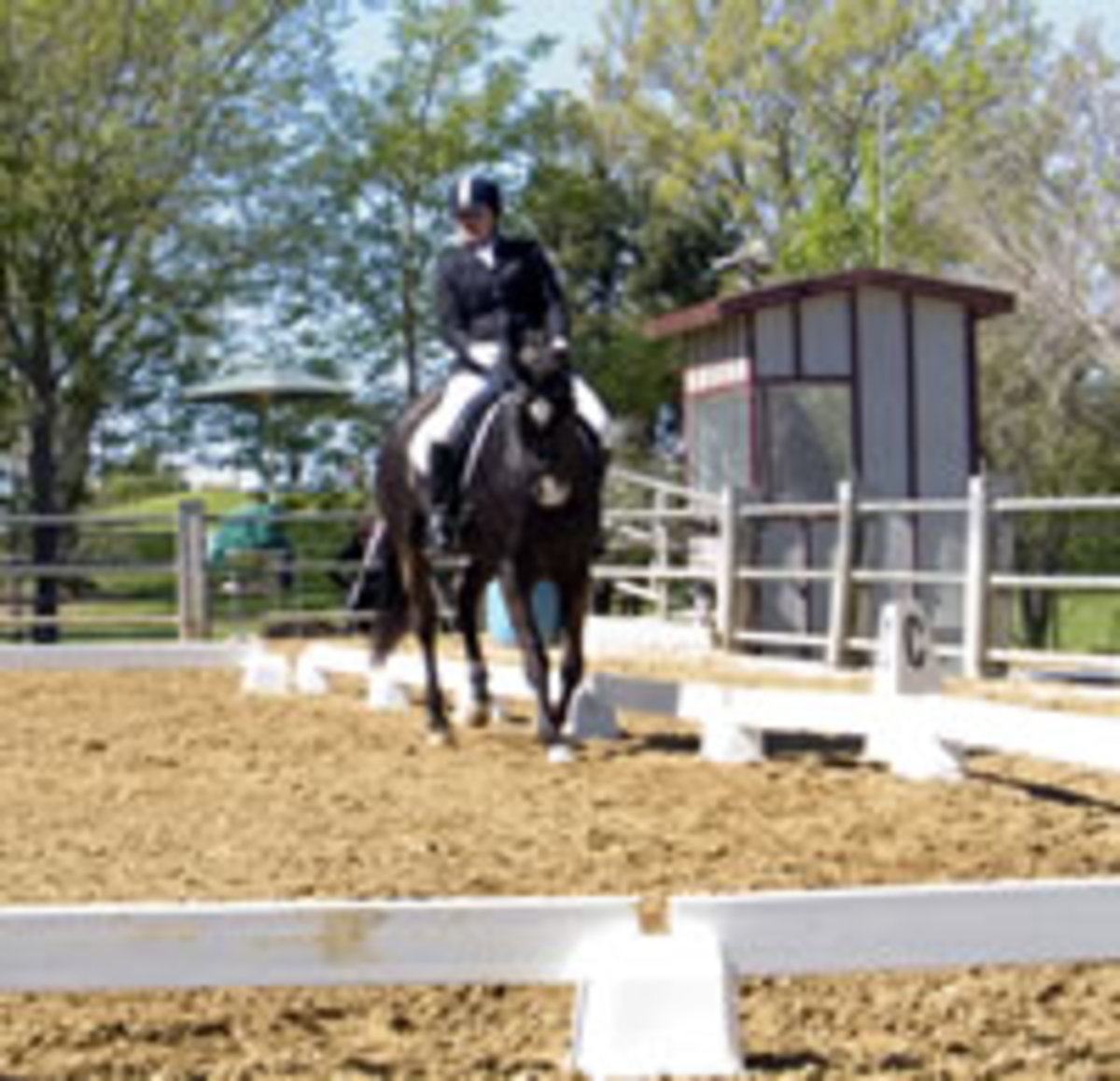
Accessories. A lot of new digital cameras come with software and their own printers so that once you’re back from a day of photographing, you can come home, plug your camera into your computer or a printer, select shots and print pictures for yourself and your friends from the day’s adventure. A big problem with today’s digital cameras is that unless it’s easy to get those pictures printed, they just stay on your camera. Some brands offer accessories to help you plug in and print out with ease. Check for those types of accessories when you look at camera brands. Kodak and their Easyshare system is one example.
Brand. Camera makers are usually very consistent with the functions on the cameras throughout their entire line, making it easy for you to know what buttons are doing what.
Lighting
The formula for shooting anything is to balance the subject, available light, shutter speed and f-stop (aperture). For example, if you are shooting during cloudy conditions or indoors, there will be very little light. So, the f-stop will need to be wide open, for example, f2.8, to let in as much light as possible, and the shutter speed will be 300 or lower. To capture the subject, you will need to pan the camera with the movement. It is likely that the shot will still come out blurry, because indoor arenas do not provide enough light to capture the image and stop the action. If you are shooting in bright sunlight, however, you will likely set the aperture to f8 or f11 and the shutter speed to approximately 500, which is a common setting for action shots. So, in these conditions, the action will be stopped and the image will be captured.
Achieving the balance between subject, available light, shutter speed and f-stop is also different for each photographer, as well. Some shoot by shutter speed, while others use the aperture to govern their settings. The auto setting on point-and-shoot cameras takes care of the balance, so the photographer can enjoy the moment.
While it’s easy to have perfect-looking horses for pictures, people are another matter entirely. Shooting dressage riders in proper attire is just like shooting a wedding–you are continually dealing with dark and light shade values. If you point it at the rider’s black coat, it will adjust to add some light because it thinks things are too dark. If you point the camera at the rider’s white breeches, it will think the scene is too light and it’ll darken the exposure.
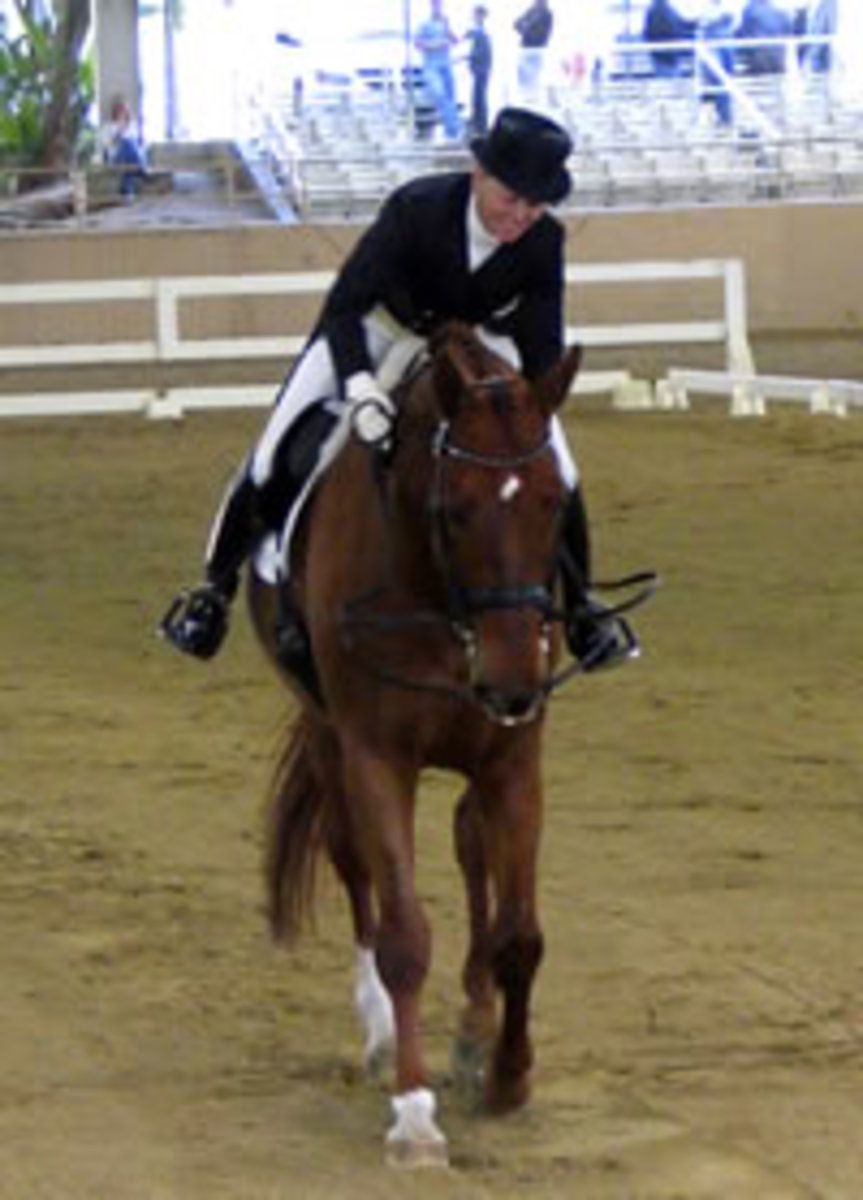
Also, there will always be a value conflict between horse and rider. Professional photographers are taught to solve the problem by keeping the detail in the blacks and whites. Let’s say your friend is in a white shirt riding a dark bay horse. If you point your camera to focus on the horse, then the camera’s sensor will read the dark bay and add light to the exposure. When you look at that picture, you will see that your friend’s shirt has turned into a solid white blob. We call that “hot” or over exposed. But if you had focused on the shirt, the horse would have been a dark blob and thus underexposed. You will have to make a choice. I choose to have detail in the darks, but this will be a personal decision that only you can make.
Outdoors is always the best environment to shoot in because sunlight is always brighter than artificial indoor light. The simple rule is to always have the sun at your back. This gives maximum shine to your horse and enough light for a proper exposure. Be careful not to shoot in partial sun and partial shade as that creates light areas and dark areas that the camera struggles with reading and balancing.
When photographing your friends in full sunlight, their faces will pick up shadows from their headgear. Unfortunately, there is no easy fix for this. You can use a flash, which may or may not be a good idea for your friend’s ride. Do I hear laughter? This is, however, a great solution for a candid picture, once you’ve got your friends back on the ground and standing with their horses. Small camera flashes are so nominal that most horses usually don’t notice them during posed pictures but can be surprised by the sparkle during a test.
The other solution to shadows is to photograph into the sun. This is tricky because you have to know how to set your camera to read the scene properly. You will not have a shiny horse but you will also not have shadows on your friend’s face. Again, choices will need to be made.
Then there are indoor events. Most arenas are poorly lit for photography. The human eye sees with very little light, but a camera requires much more in order to create a picture.
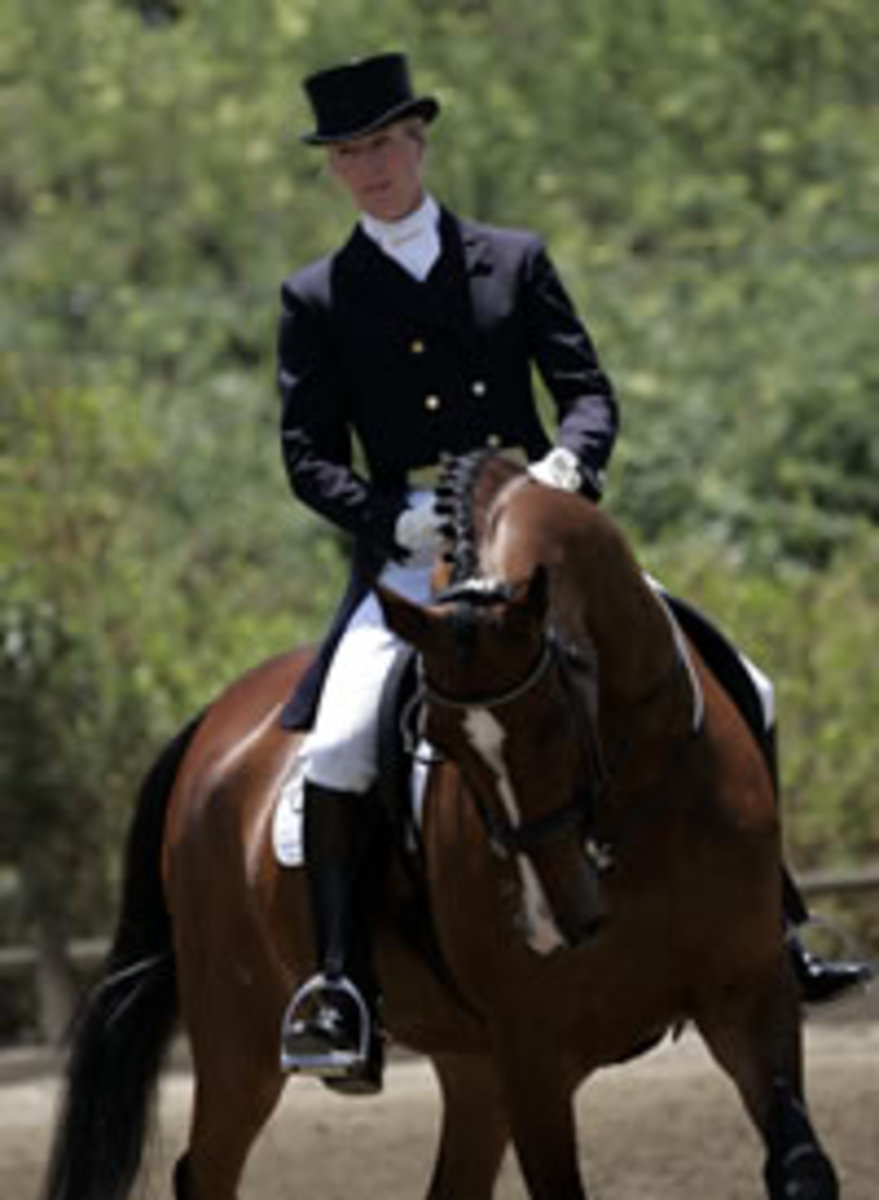
If the area is only walled halfway up, leaving the top parts flooded with light, you’ll have an even harder time photographing, because the entire scene that your camera is reading is extreme dark and light value. But, with time, you can learn to look for the “sweet spots” in any arena–spots with adequate light from a door, window or overhead lamp.
Of course, photographing your friend who’s getting ready outdoors is always a better option. Or catching the moment she emerges from the indoor arena with her award ribbon is great.
Environment
Perfect pictures are usually created in a controlled environment. If you cannot control everything involved in creating the picture, it will always fall a little short of perfect. Because we are photographing friends, family and large animals in public settings that can be chaotic and far from controlled, we can only hope to minimize distractions and catch the enjoyment of the day.

But as the world gets more crowded and we acquire more stuff, you’ll probably have more than your share of urban clutter around the grounds. Common background distractions include water trucks, portable toilets, parking lots, cars parked where they shouldn’t be and white tents (here’s that value problem again). Even professional photographs have some of these things in the backgrounds.
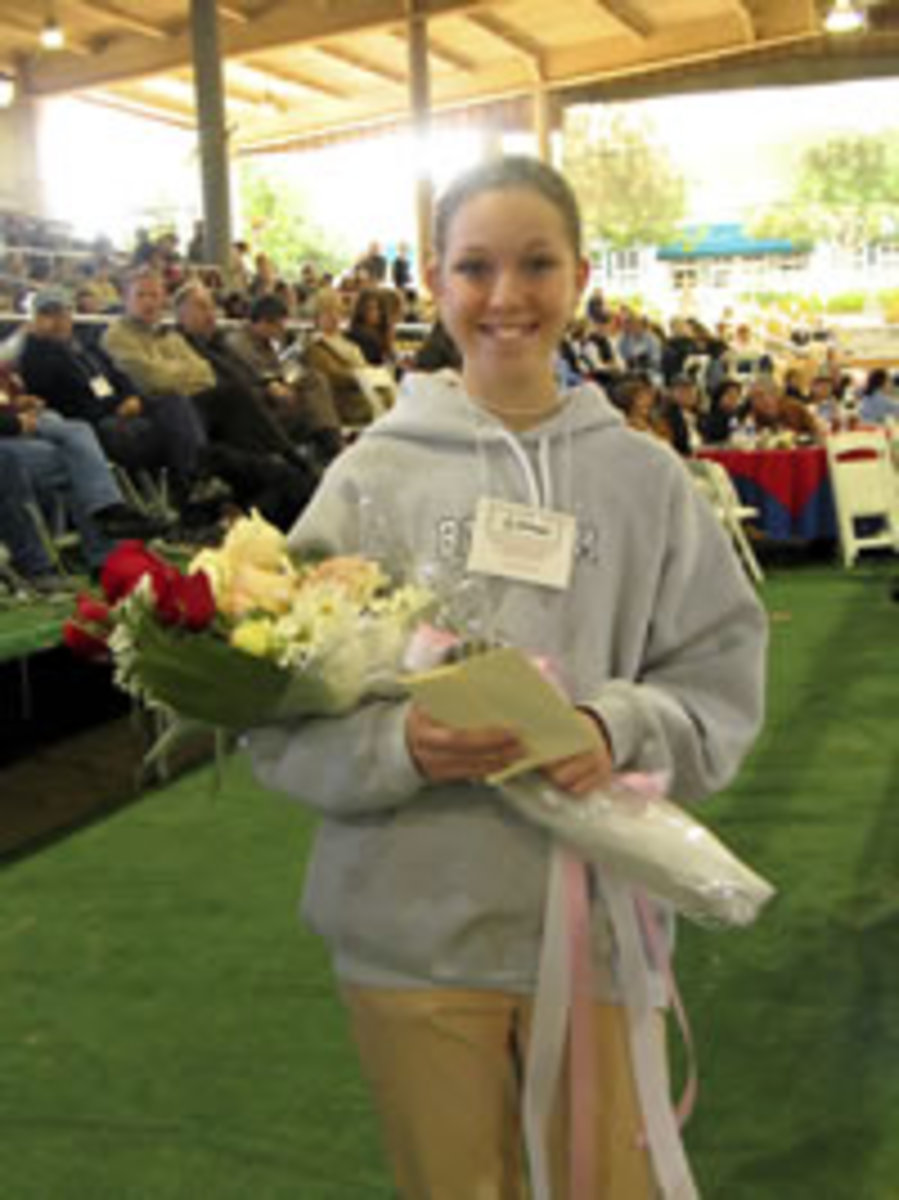
Probably the best way to fix this problem is to fill the entire frame with your friends and their horses. This will not only cover up the clutter but will also give you a large enough picture to play with if you want to blow it up or add an interesting crop.
You can also be creative with your photography. If you have a nice picture but there is clutter in the background, try converting it to black and white. Classic black and white photography has tons of elements in it but the subject, when photographed properly, seems to jump off the frame. I love to do this with indoor events, as the light is usually horrible but the riders are top caliber so converting to black and white and de-saturating the color gives them a nice vintage look.
Most cameras have an “auto” or “program” setting and other modes that will average the scene for you and try to give you the best possible picture from what it reads. After all, you’re there to shoot and have fun and that shouldn’t involve a lot of math and lighting variables. But you will have to do some trial and error with your camera to find out what setting works best for you. When you find a camera that takes nice pictures and works well for your lifestyle, hang on to it.
Candids & Portraits
You’ve got sun, people are dressed well, you know your camera settings and you’re ready to go. If you are a dressage rider, you know what movements to look for and what angles to shoot at. But if you are at a public event, you don’t want to get in anyone else’s way. You also don’t want to spook the horse and ruin the ride. It is, however, often easy to position yourself close enough to catch a nice picture of your friend’s ride unobtrusively. If it is impossible for you to get close enough to shoot some of the test, then consider taking pictures as they warm up. You will be able to get much closer and then you can watch the ride and enjoy the moment with your friend. If the court is in a pretty area with no background distractions, then consider taking a big view of the environment and the ride. I love these types of pictures and consider them “sense of place,” where the viewer not only gets to enjoy the ride but also the beautiful grounds it took place at.
Whether you are at a show, a clinic or a backyard arena, try to position yourself to the closest edge of the arena to catch a good picture of the ride. If you are too far away, the horse and rider in the picture will be very small, you will have to crop to enlarge, and the entire picture will be disappointing.
Action shots will always requires a faster shutter speed than still shots. Capturing the best moment in a horse’s stride takes practice. If you have a camera with shutter lag, it is even more challenging. With a point-and-shoot camera, you will work extremely hard trying to time the movements, because you will always be working with a shutter lag. With practice, you can overcome this challenge. One way is to know your camera’s lag time and time your shot accordingly. Another way to do it with a point-and-shoot is to preset the focus–set the focus on the spot the subject will be in, and take the shot when she is there. But, if you purchase a digital SLR (single lens reflex) camera with real-time viewing (through a viewfinder rather than with an LCD/electronic screen), a decent buffer size and quick processing speed, shutter lag will not be a problem. These cameras, however, can be pricey.
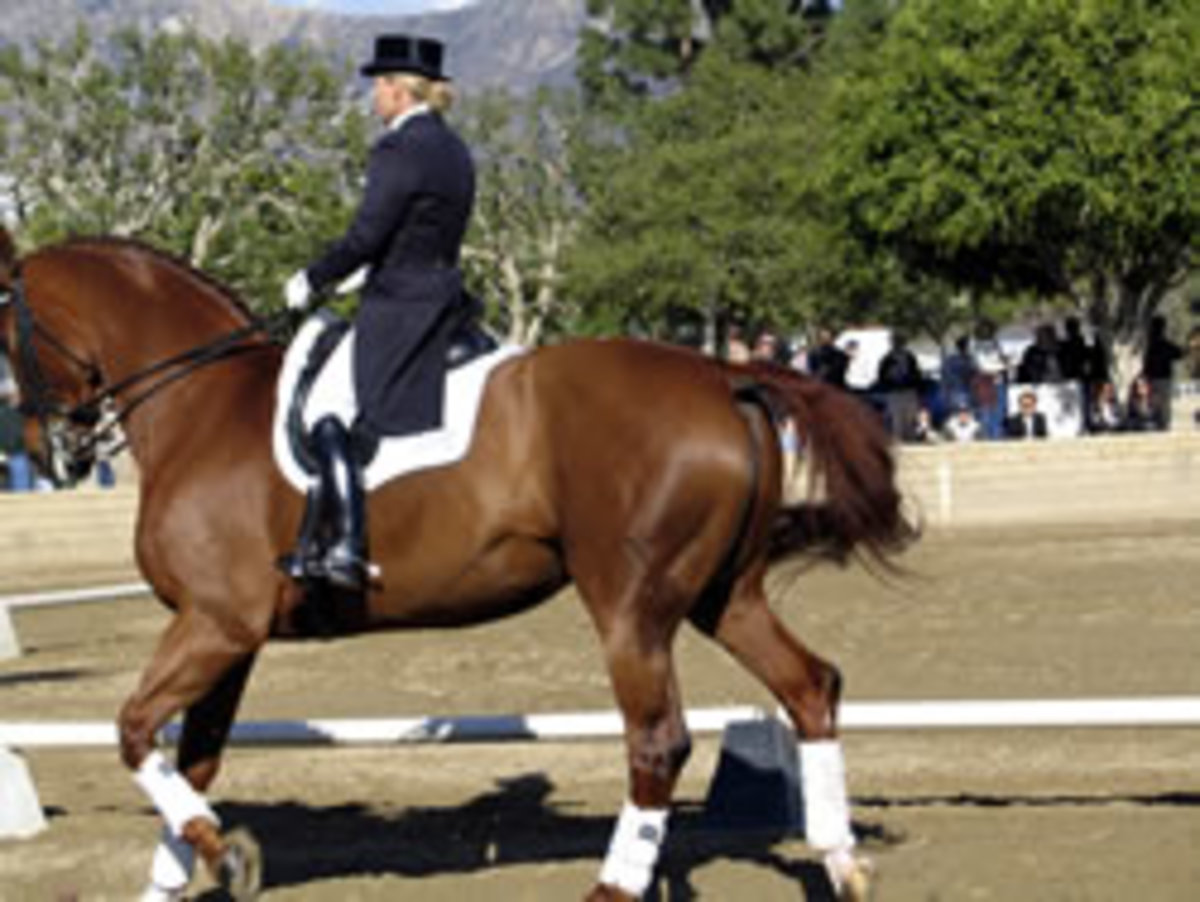
All the same rules apply when you are at a backyard arena, but at home you have freedom to get closer to your subject and ask her to ride a movement again. This helps you find the perfect time to capture the best moment in the horse’s stride. Shooting all the time helps you get accustomed to the camera’s features, too.
Don’t forget about the classic candid. A candid is an informal, unposed photograph and can be the best memory of the day and perfect for scrapbook entries and family keepsakes.
Some of the most fun of showing is lunching with friends back in the barns or at your trailer and hanging out with the clinician. These pictures are easily shot, with your only dilemma being how you’re going to get in the picture with everyone since you have to photograph. If you take as much control as you can and stand your group up out of the way, maybe with their awards, then you’ll have wonderful pictures.
Horse portraits are also a great way to get friends together to help each other and have fun. The same advice for show photos holds true for portrait shots: Have a clean horse with a braided mane, and have someone get his ears up for you.
Photography is many things to many people. It is a creative and personal art form open to everyone. I strive to tell stories with my pictures, and I confess that I have no less than 12 huge photo albums that document my life from birth (thanks to my mother’s talent with photography) to random samplings of today. I have additional specialty albums for members of my family, our horse–who has her own very large album–and I won’t even go into the number of hard drives I have photo files stored on! For me, photography and my life have always been entwined. The people we admire, as well as friends and fun moments in our lives, can live on. Even when we are unable to hoist ourselves into the saddle or walk next door to see our best friend, the joy of those moments can be timeless with the help of photography.
Sharon P. Fibelkorn is a professional equine photographer who frequently contributes to Dressage Today. Her website is www.sharonfibelkorn.com.


